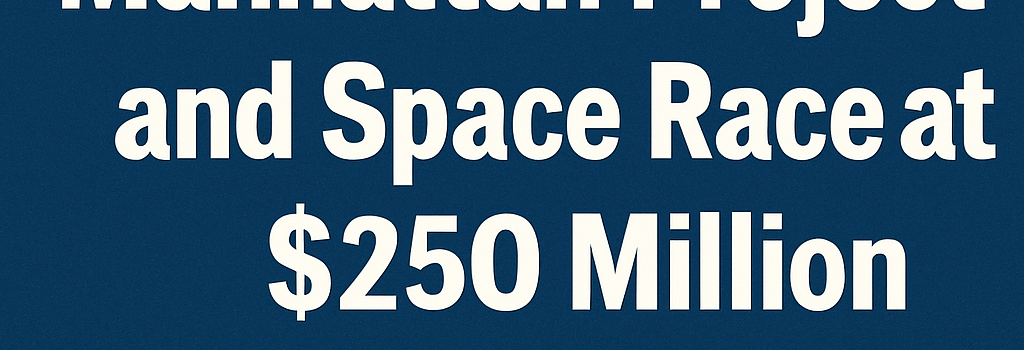AI Salaries Exceed Manhattan Project and Space Race at $250 Million

Silicon Valley’s AI talent war has reached a compensation milestone that renders even the most iconic scientific paychecks of the 20th century financially modest. Meta recently offered AI researcher Matt Deitke a $250 million package over four years—averaging $62.5 million per year, with potentially $100 million in the first year alone—shattering every historical precedent.
Meta’s Record-Breaking Offer
According to reports, 24-year-old Matt Deitke, co-founder of the startup Vercept and former lead on the multimodal Molmo system at the Allen Institute for AI, received:
- $250 million total compensation over four years
- Up to $100 million in year one (equity and cash)
- Access to tens of thousands of GPUs in Meta’s data centers
Meta CEO Mark Zuckerberg is also said to have offered another AI engineer a $1 billion package over multiple years—underscoring that these roles are viewed as strategic assets in the race for artificial general intelligence (AGI).
Historical Compensation Comparisons
The Manhattan Project and Oppenheimer
J. Robert Oppenheimer earned approximately $10,000 annually in 1943, equivalent to about $190,865 today. By contrast, Deitke’s annual pay averages 327× Oppenheimer’s inflation-adjusted salary, highlighting an unprecedented talent premium.
The Apollo Program and NASA Engineers
During Apollo:
- Neil Armstrong earned $27,000 per year (~$244,639 today).
- Buzz Aldrin and Michael Collins made less than $170,000 in today’s dollars.
- A newly graduated NASA engineer in 1966 started at $8,500–$10,000 (~$85k–$100k today), while top performers with 20 years’ experience peaked near $278,000.
Meta’s top AI researcher now makes more in three days than Armstrong did in an entire year.
IBM, Bell Labs, and Early Silicon Valley
Thomas Watson Sr., IBM’s CEO in 1941, received $517,221 (~$11.8 million today). Bell Labs’ directory salary was roughly 12× that of the lowest-paid technician—far below today’s AI compensation multipliers.
Economics of the AI Arms Race
Tech giants with near-$2 trillion valuations are deploying tens of billions annually on AI infrastructure and R&D. An NYT source summarized the logic: “If I’m spending $80 billion on capex, adding $5 billion to secure a world-class team is trivial.”
Infrastructure and Cloud Computation Costs
Building and training large language and multimodal models demands:
- GPU Fleets: NVIDIA H100 GPUs with 900 GB/s HBM3 bandwidth, costing $30/hour per GPU.
- High-Performance Interconnects: NVLink and InfiniBand networks delivering 600 GB/s bi-directional throughput.
- Power and Cooling: Data centers drawing 700 kW per rack, with PUE (Power Usage Effectiveness) often above 1.2.
Annual cloud and on-prem AI operational costs easily exceed $10 billion at hyperscale, dwarfing the $1.9 billion (≈$34.4 billion today) total cost of the Manhattan Project.
Technical Challenges and Hardware Scaling
Beyond compensation, companies compete on raw compute and hardware innovation:
- Chip Diversity: From GPUs (NVIDIA, AMD) to TPUs (Google) and wafer-scale engines (Cerebras).
- Memory and Throughput: Addressing bottlenecks in memory capacity (up to 80 GB HBM3 per GPU) and inter-GPU bandwidth.
- Software Stacks: Optimizing frameworks like PyTorch and JAX for distributed training across thousands of nodes.
These technical hurdles amplify the need for specialized researchers, justifying sky-high offers.
Regulatory and Ethical Considerations
Governments and civil society are increasingly concerned about:
- AI Talent Concentration: A handful of firms controlling critical expertise and compute.
- Export Controls: Proposed U.S. restrictions on advanced semiconductors could shift R&D offshore.
- Labor Markets: Automation risks displacing millions of knowledge-workers.
According to AI ethics expert Dr. Timnit Gebru, “Concentration of both compute and talent raises systemic risks we’ve yet to fully quantify.”
Future Outlook: AGI Timeline and Talent Pipeline
While AGI timelines remain debated—estimates range from 5 to 50 years—the talent pool is narrow. Elite researchers often form private Slack or Discord groups to share offers, negotiate collectively, or hire agents. As AI hype persists and investment soars, we may see even larger compensation packages as firms vie for the next breakthrough.
Additional Sections:
- Talent Development: Universities and labs are launching specialized AI diplomas and certificate programs to broaden the pipeline.
- International Competition: China’s AI startups and government labs are matching compensation, fueling a global brain race.